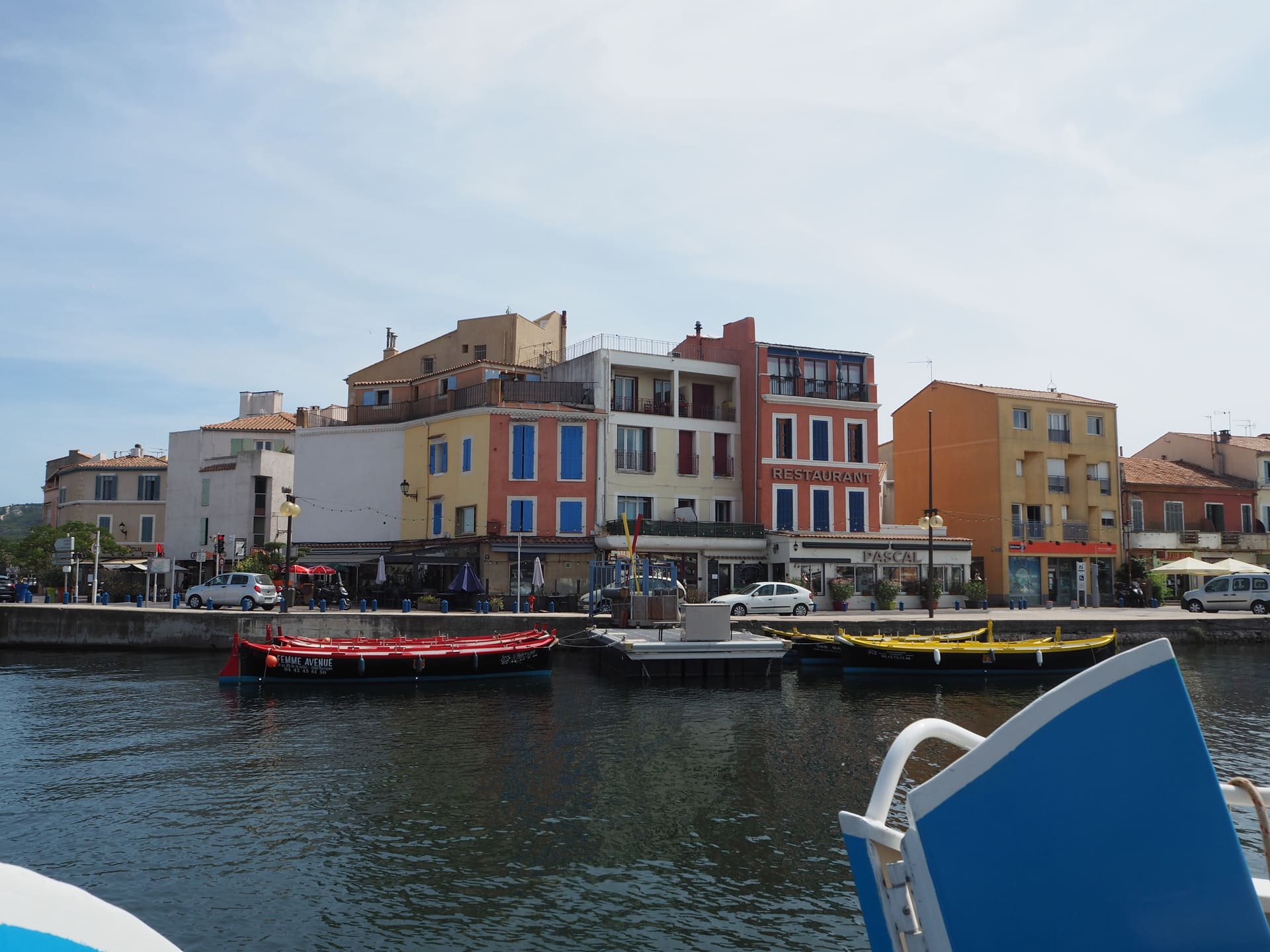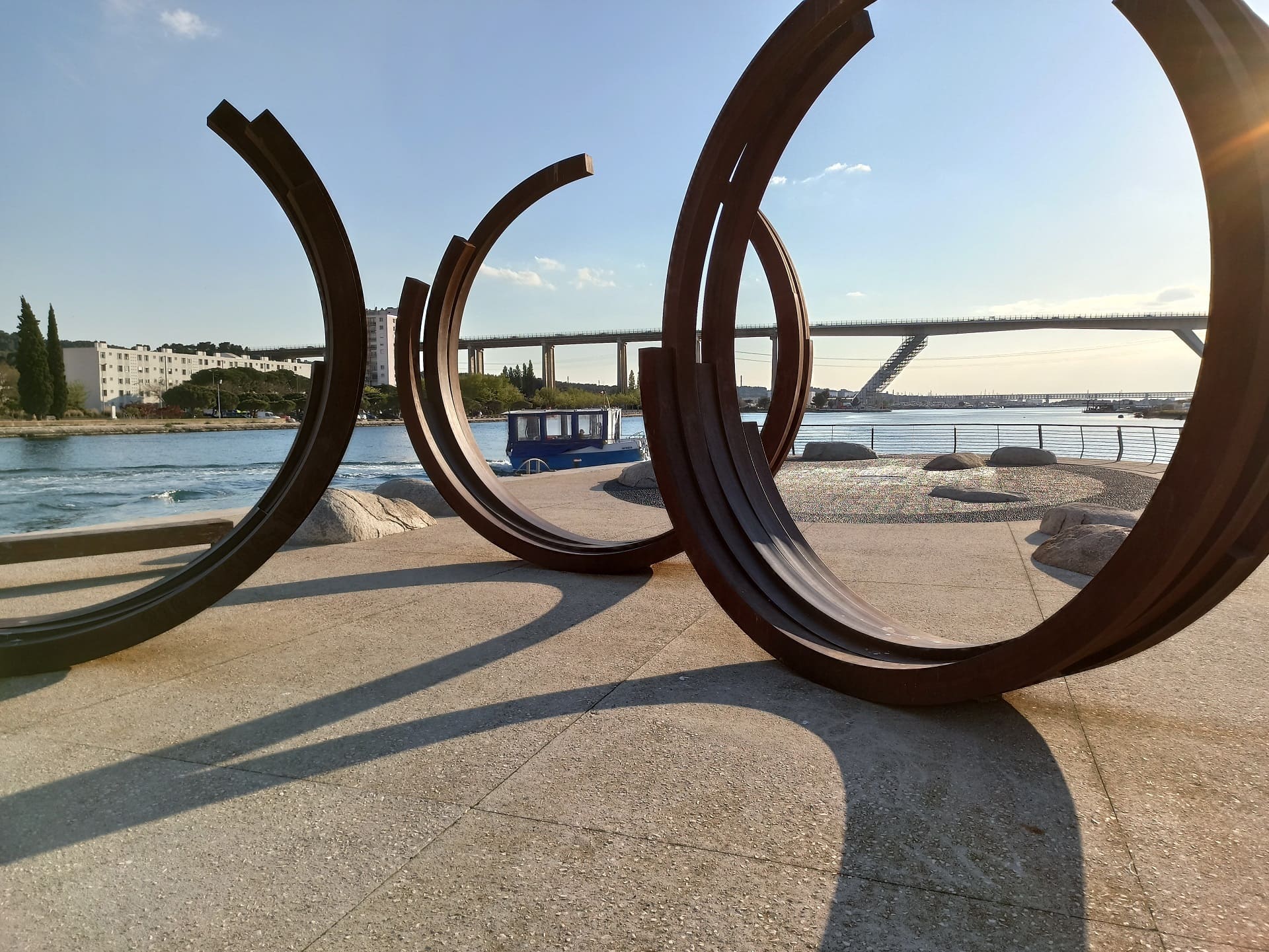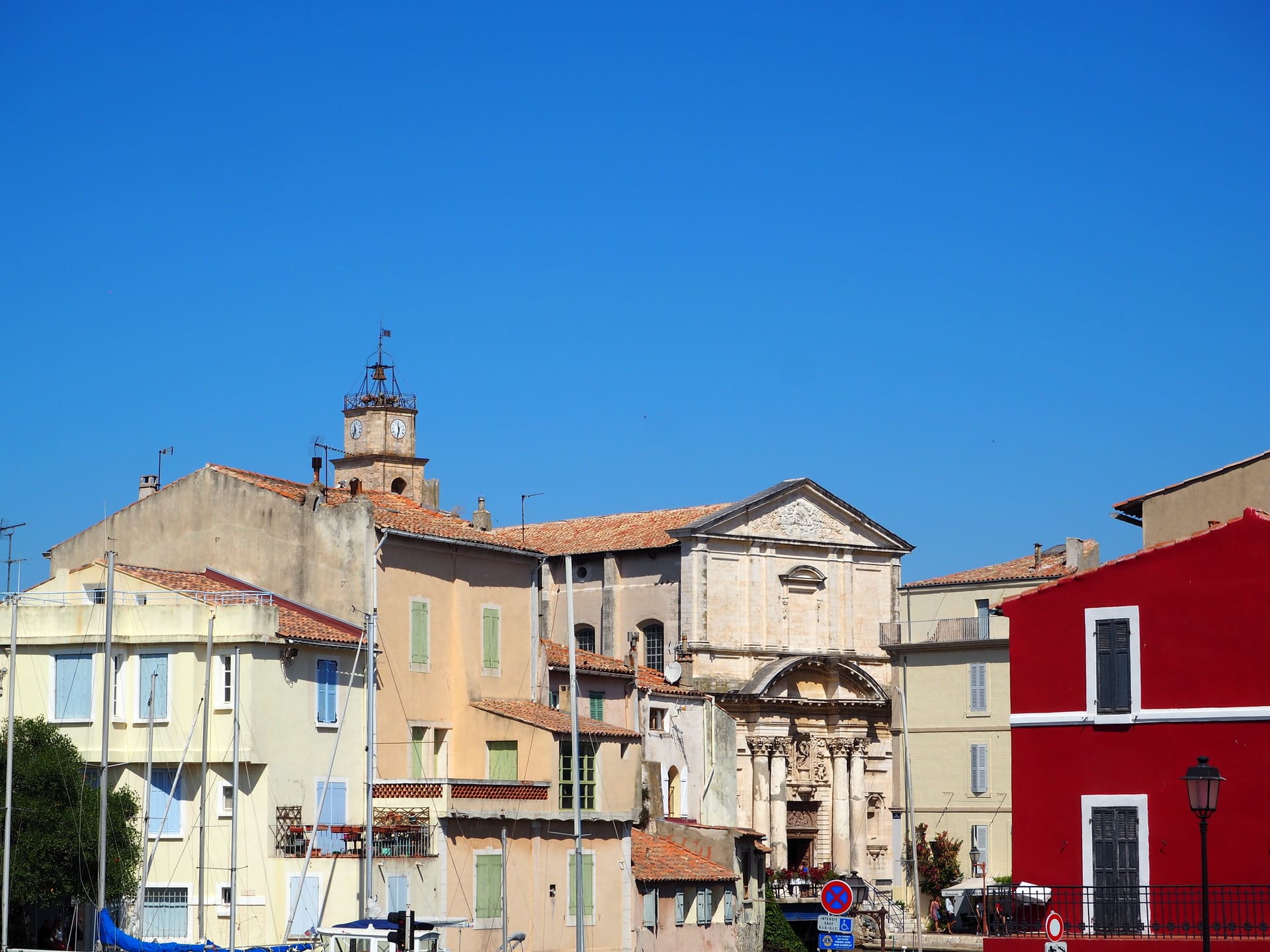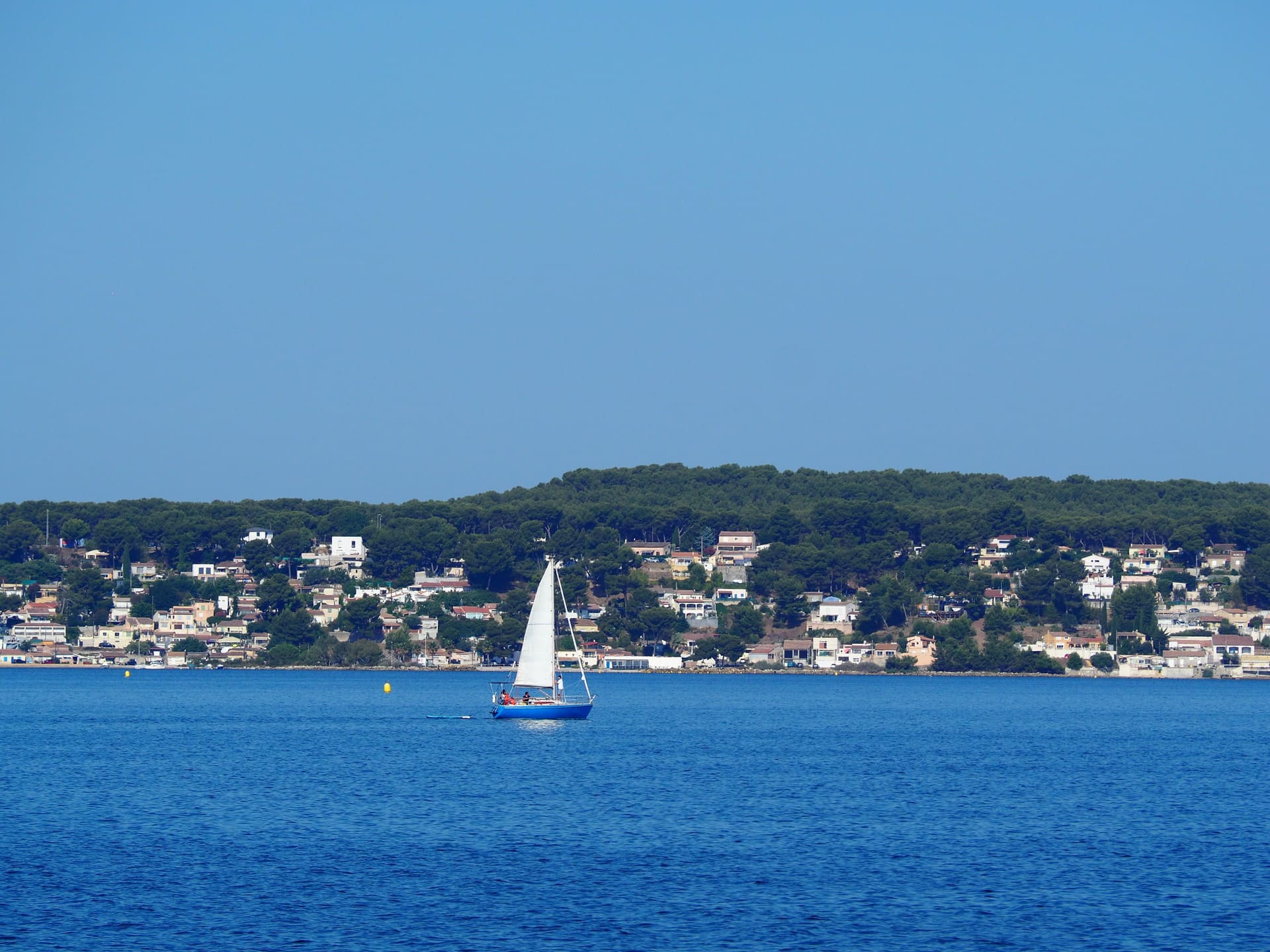Boat trip on the canals of Martigues
Do you know Martigues, a picturesque Provencal town set on the water?
The diversity of its landscapes and the richness of its cultural, historical and natural heritage makes it a must-see when visiting the region!
Located between the Mediterranean Sea (to the west) and the Etang de Berre (to the east), the city can be visited in various ways. It is possible to stroll on foot in the colorful alleys of the historic center, to cycle by the water and in the parks, or to take the maritime shuttle to see the unusual places of the three districts.
To learn more about this city known as the "Venice of Provence", I invite you to discover our many activities:
Boat trips
Commented walk along the creeks of the Côte Bleue
Guided tour on the canals of Martigues
Sunset boat ride
Fun walks
Treasure hunt: « Treasure hunter »
Fun hike in the Grand Parc Figuerolles
Guided tours
Visit of Fort-de-Bouc
Freshwater hiking in the city center
As captain, I will mainly tell you about the commented canal tour.
So do not wait any longer and embark by my side on one of my blue boats, discovering the history of Martigues and its waters.
To begin with, you should know that this stroll of about 45 minutes highlights the three districts of downtown Martigues: Ferrières, Île and Jonquières, and each of them is unique.
Thus, the visit begins on the waters of the Ferrières district. This is surely the most modern part, which also houses the majority of administrative buildings such as the tourist office or the town hall.
Cultural sites such as the Théâtre des Salins, the multipurpose hall La Halle, the History Gallery and the Félix Ziem museum also find their place there.
Some of them will be seen from the first minutes of the ride.
Of course, the history of these constructions (and many others) will be told to you throughout our visit.
Nearby, you will have the opportunity to see two bronze statues of great value in the eyes of martégaux, they are the Fisherman and the Ramendeuse.
Namely: the menders were the fishermen's wives who mended the nets.
Thus, these statues bear witness to the ancestral identity of Provençal Venice, represented by fishing.
They are proof of the city’s desire to combine tradition and modernity.
Quickly, the artificial peninsula of this district - a 130 m long spire - will point the tip of its nose!
In addition to fountains and water jets, the tip of the Island hosts a sculpture
by Bernar Venet titled "219.5 ° Arc x 15".
To know: this artist has exhibited other works of the same genre in cities such as
than Paris, New York or Tokyo.
After turning to port, we will sail on the Galiffet canal to observe to our left the historic center of Provençal Venice. Several unmissable places are located in this part of the city, and in particular the famous Brescon quay,
better known as the Bird Mirror. The colorful fishermen's houses and their reflections in the water have made this classified site a place highly appreciated by artists, such as Ziem, Dufy or Delacroix.
Stay tuned on the boat because I will tell you a funny anecdote about the reason for the colors chosen for the houses!
Its presence, its architecture and its Provençal Baroque decorations of Italian influence have long earned it
the nickname "The Cathedral". Built between 1670 and 1680, it testifies to the prosperity of the city in the 17th century
and the attachment of the Islanders, since they participated in its financing.
Since 1947, the Madeleine Church has been listed as a Historic Monument.
Many other treasures of our heritage, which will not be directly visible from the boat, are hiding on the Island. So, when our walk is over, I invite you to come back to the heart of the district to see the bronze statues of Fernandel and Bourvil, a tribute to the film “La Cuisine au Beurre” shot in Martigues.
And do not miss the house in a gendarme's hat on the other side of the Saint Sébastien canal (just behind the statues) which served as the facade for the restaurant of this comedy of 1963. I also advise you to discover the many places enjoyed by the district: place Mirabeau, Félix Gras, Comtal and Maritima.
The Island is a gem for lovers of photography, art, cinema and architecture.
With its pedestrian streets, as well as its shops, bars and restaurants, it is considered as the district of craftsmen and traders of the city. Jonquières is then an excellent choice for strolling, window shopping and having a drink on the terrace. Moreover, do not hesitate to read the article "the good local plans and the good addresses" which summarizes the restaurants and the businesses respecting the martgal know-how
The church of Saint Geniès and the chapel of the Annonciade des Pénitents blancs can also be seen from the boat. The interior of the latter can be visited, and I highly recommend it. This almost secret building (attached to the church) and seemingly modest from the outside actually contains a luxurious interior space marked by the verve and color of an intense baroque decor. Its altarpiece, its few pieces of furniture, its graffiti gallery and its decoration of the ceilings and walls are worth the detour. Since March 21, 1910, the chapel has been classified as a Historic Monument.
Its name comes from the fact that it opens in the middle - thanks to an electric maneuver commanded from a bridge house installed nearby, on the Island side - to allow the passage of boats measuring over 4.80 meters. As the bridge rises, you can observe two flights of 25 meters each pointing skyward, weighing over 400 tons in total.
Once the bridge is behind us, we will head towards the port of Jonquières. City of marinas (former fishing ports), Martigues has seven seaports spread over the three districts and two dry ports on the banks of the Caronte canal.
Note: the city offers a free maritime shuttle that takes you from one district to another via the canals; on market days she also stops at the Jonquières market to reduce traffic.
At this point, we will be on the largest saltwater pond in Europe: the Etang de Berre. The functions of this inland sea are diverse: for fishermen, it is a fish nursery; for the defenders of nature a delicate ecosystem; and for residents and visitors, it is a place to walk and a privileged site for nautical activities.
A little anecdote: as I speak to you, the candidacy of this unique territory for UNESCO's world heritage is under study.
The Quésaco calen? This term designates two things:
- A net used during traditional martégale fishing
- A fisherman's hut
The one I will show you is the last one in existence. Its main activity is fishing for "female poutargue mullets" (or mules) whose eggs, salted and dried, are used to make the traditional bottarga, also called "martale caviar".
To fish them, a net resting at the bottom of the Caronte canal is raised using a mechanical winch; the fish are then harvested by hand by two or three fishermen, standing on a small boat.
This activity is permitted from July 1 to the end of February, but it is in the summer - July and August - that the muge season takes place. The bottarga is then sold on site for more than 150 € per kilo. A price that corresponds to the rarity of the product and its quality.
What does it taste like and how to taste it?
Well, its taste is indescribable. However, I promise you an unusual flavor, which will quickly invade your palate. As an aperitif, it can be cut into thin slices and eaten on its own, or with plain, oiled or buttered bread. At mealtime, it is eaten, cooked or grated, in many Provençal recipes.
Captain's tip: Go ahead and taste this unique dish!
This is where our guided walk through the canals of Martigues ends. This article presents only a tiny part of the story that will be told to you once on board the boat. It would be a shame not to discover the beauty of this place seen from the water, since in the end, it is indeed its canals that have earned the city its nickname of Provençal Venice.






